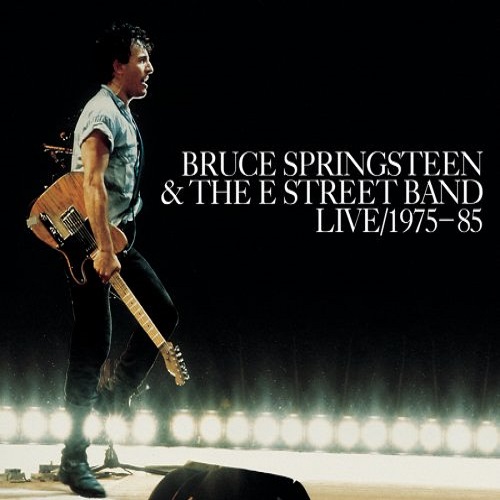
Live 1975 - 1985 (1986)

Disc One
1. Thunder Road
2. Adam Raised a Cain
3. Spirit in the Night
4. 4th of July, Asbury Park (Sandy)
5. Paradise by the "C"
6. Fire
7. Growin' Up
8. It's Hard to be a Saint in the City
9. Backstreets
10.Rosalita (Come Out Tonight)
11.Raise Your Hand
12.Hungry Heart
13.Two Hearts
Disc Two
1. Cadilac Ranch
2. You Can Look (But You Better Not Touch)
3. Independence Day
4. Badlands
5. Because the Night
6. Candy's Room
7. Darkness on the Edge of Town
8. Racing in the Street
9. This Land is Your Land
10.Nebraska
11.Johnny 99
12.Reason to Believe
13.Born in the U.S.A.
14.Seeds
Disc Three
1. The River
2. War
3. Darlington County
4. Working on the Highway
5. The Promised Lan
6. Cover Me
7. I'm on Fire
8. Bobby Jean
9. My Hometown
10.Born to Run
11.No Surrender
12.Tenth Avenue Freeze Out
13.Jersey Girl
By 1986, Bruce Springsteen was no longer merely a rock icon—he was a cultural phenomenon. In the wake of Born in the U.S.A., which yielded an unprecedented seven Top Ten singles and brought his face to every magazine rack in the Western hemisphere, the logical next step was to capture the full measure of what had always been his most potent asset: the live show. The result was Live/1975–85, a sprawling five-LP (or three-CD) retrospective chronicling a decade of performances from clubs, arenas, and stadiums. In every sense, it was epic.
The ambition of the project cannot be overstated. At forty tracks, spanning three formats and nearly four hours, this was not a sampler or a souvenir—it was a statement. At a time when box sets were still a novelty, Springsteen’s entry redefined the possibilities of the form. Rather than recreate a single concert, the collection assembles highlights from numerous performances, offering a curated arc across his live evolution. One might have feared that such an approach would fracture the listening experience, disrupting the flow and emotional continuity. Instead, the sequencing—clearly approached with care—forms a coherent, dynamic portrait of an artist growing in voice, confidence, and reach.
The structure itself is subtly theatrical. The early tracks reflect the intimacy of the mid-’70s clubs, where Springsteen’s storytelling, humor, and youthful urgency shine. From there, the set expands into the grandeur of arena rock, culminating in the commanding stadium presence he had mastered by the mid-’80s. One of the great achievements of the box is its ability to preserve the electricity of each phase without losing the thread between them.
Springsteen’s acoustic prelude to The River, delivered with a soft-spoken recollection of his father and a near-draft into Vietnam, offers one of the most poignant moments. It’s a reminder that even at maximum volume, his music never lost its emotional gravity. And it’s not all originals—there are covers, too, rendered with characteristic reverence and fire. This Land Is Your Land becomes a populist hymn, while War channels Edwin Starr’s fury into something both timeless and of-the-moment. The breadth of material is astonishing: anthems, laments, protest songs, ballads, and barnstormers all woven into a single, seamless fabric.
Notably, Live/1975–85 resists the obvious. Several of the commercial juggernauts from Born in the U.S.A. are omitted, and in their place are lesser-known but often more revealing tracks. The absence of Glory Days and Dancing in the Dark, for instance, feels intentional—perhaps a subtle statement that the man behind the myth was still interested in the margins, in the songs that told more private stories. The inclusion of unreleased tracks, such as Seeds and Paradise by the “C”, further reinforces the sense that this was not merely a catalog dump, but a genuine attempt to document something elemental and alive.
That the album debuted at No. 1 on the Billboard chart was both a commercial coup and a validation of the live performance as an essential medium. Few, if any, box sets have enjoyed such immediate success. It was a testament not just to Springsteen’s popularity, but to the power of the rock concert as a form of storytelling—visceral, communal, and unrepeatable.
Ultimately, Live/1975–85 is less a retrospective than a living document. It captures an artist at full gallop, riding the crest of his career, and invites the listener not simply to observe, but to inhabit. It remains one of the most ambitious and successful live albums ever assembled—equal parts celebration and chronicle, myth and moment.
Go back to the main page
Go To Next Review